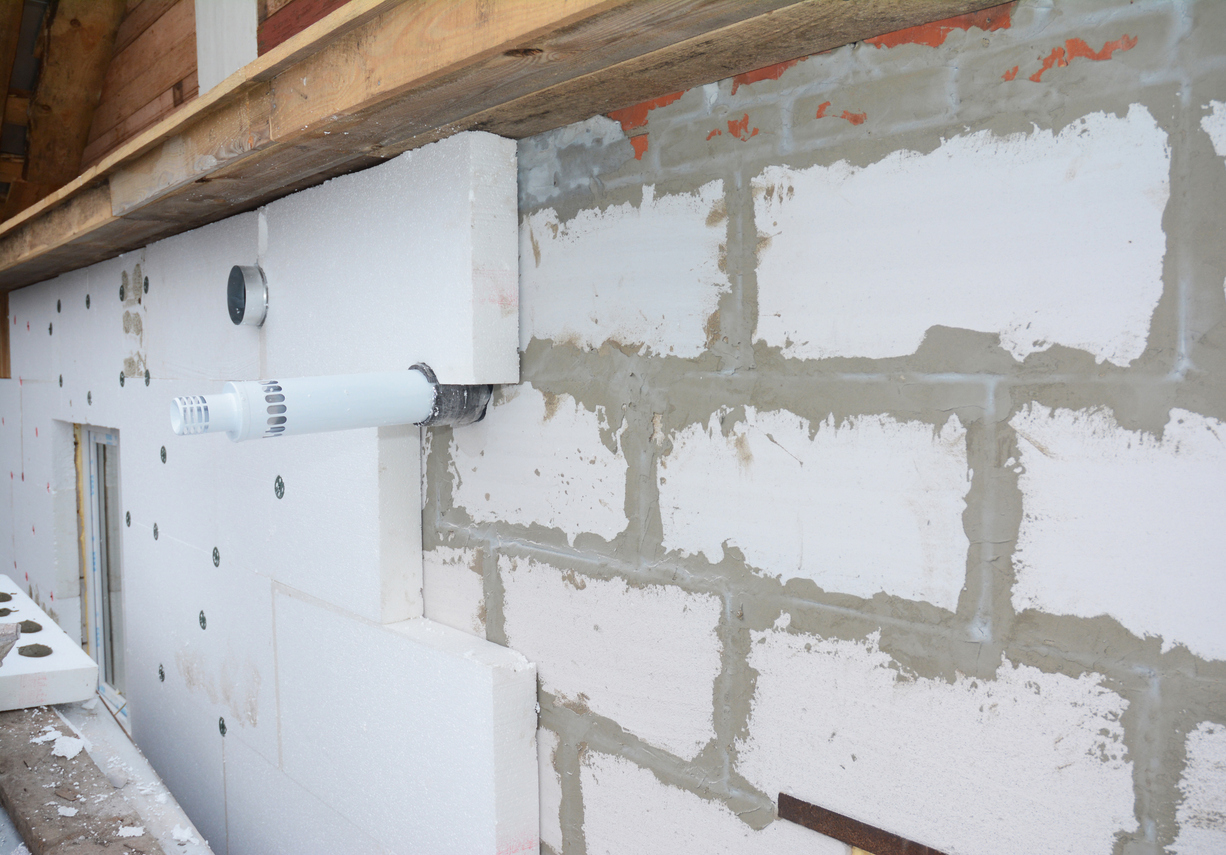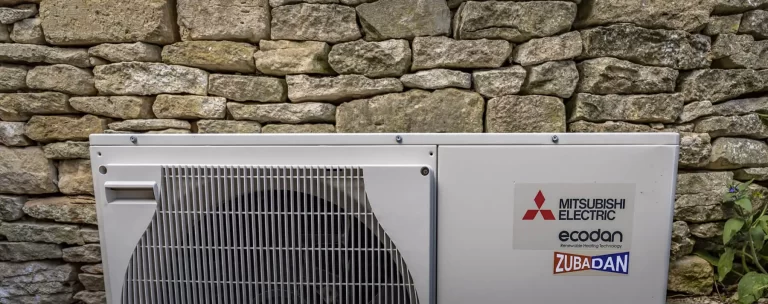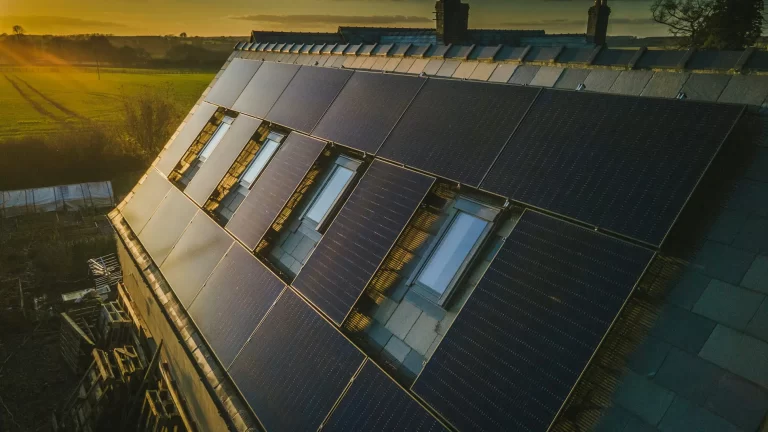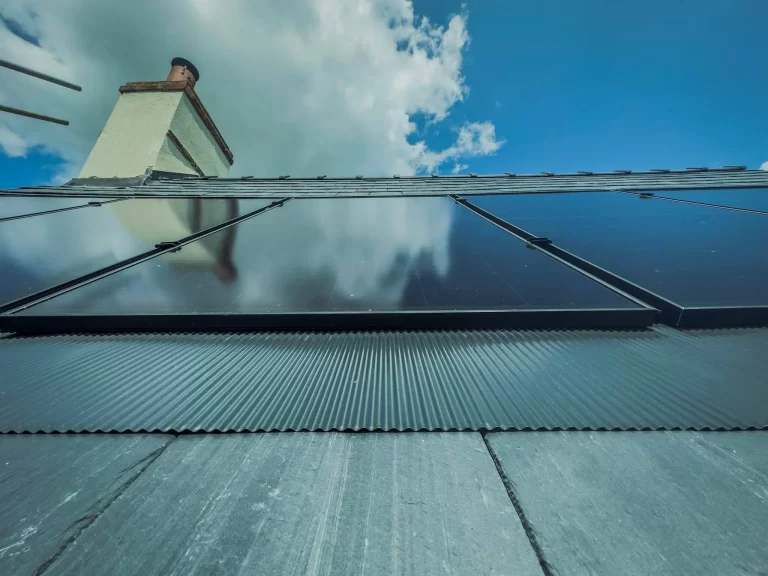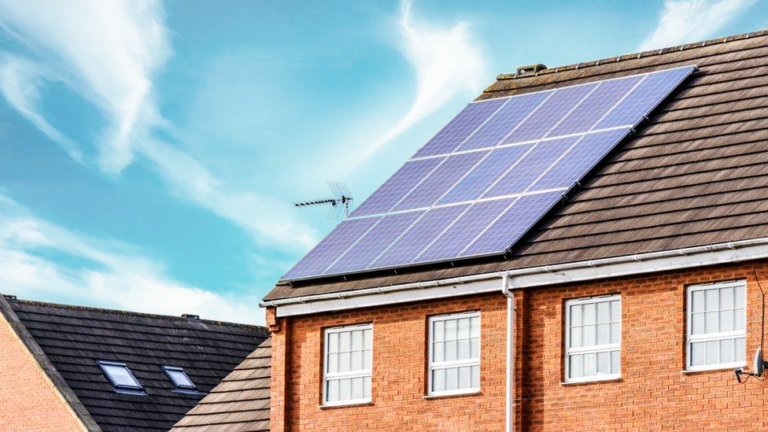Insulating your home properly is an effective way to reduce the amount of energy you need to use on heating. The most common ways to insulate your home are through cavity wall insulation, roof insulation, and draught-proofing, but external wall insulation (EWI) could provide even better results, or be better suited to your home if other types of insulation aren’t an option for you. EWI not only enhances the thermal performance of a building, reducing heat loss through the walls, but also improves the exterior appearance and can increase the property’s value.
This guide will delve into what EWI is, how it works and its benefits, helping you decide if it’s the right insulation choice for your home.
What Exactly is External Wall Insulation and How Does it Work?
External Wall Insulation (EWI) is a way of improving the energy efficiency of your home by insulating its external walls. It’s particularly useful for buildings with solid walls, where cavity wall insulation isn’t an option, but it can also be used to enhance cavity wall insulation in some circumstances.
EWI involves attaching a layer of insulating material to the exterior walls of your home, followed by a protective render or cladding. This dual approach not only improves the thermal performance of the building but can also improve its outside appearance.
The main purpose of EWI is to reduce heat loss through the walls, which can really affect how much energy your home needs to stay warm. By adding insulation to the outside, the internal temperature of your home will be more stable, meaning you won’t need to use as much energy for heating or cooling.
Can External Wall Insulation be Used for All Buildings?
External Wall Insulation can be used on a few different types of buildings, but it’s not always suitable for every home. It’s mostly used on buildings that have solid walls, as cavity walls usually have cavity wall insulation instead. However, only 9% of solid-walled properties have EWI compared to the 71% of cavity-walled homes with cavity insulation, meaning that many solid-walled properties suffer from a lack of insulation and may feel much colder or require a lot more energy to keep warm.
If you’re not sure whether your building is a good candidate for external wall insulation, this list can help you to better understand the circumstances when it may be useful:
Solid Wall Properties: Older buildings constructed before the 1920s often have solid brick or stone walls, making them ideal candidates for EWI, as they lack the cavity that newer buildings have for insulation.
Non-traditional Construction: Buildings made from concrete panels, steel frames, or timber frames can also benefit from EWI.
Cavity Wall Buildings: While buildings with cavity walls are usually insulated by filling the cavity, there are instances where EWI might be preferred. This could be due to the cavity being too narrow or already filled with a less effective material.
Listed Buildings and Conservation Areas: While EWI can offer significant energy efficiency improvements in listed buildings, altering their external appearance might need planning permission.
Modern Buildings: Newer buildings can benefit from EWI if they were constructed with minimal insulation or if additional insulation is needed to meet higher energy efficiency standards.
Does My Home Have Solid Walls?
Since solid-walled buildings are the main candidates for external wall insulation, it’s important to figure out whether your home has solid walls or not. There are a few different ways to find out:
Construction Date: If your home was built before the 1920s, it’s likely to have solid walls, as cavity walls only became popular after this time.
Wall Thickness: Look at an outside door or window to find out the thickness of your existing wall. If the wall is less than 260mm thick, it is likely to be a solid wall.
Brick Pattern: Solid walls usually have bricks that are laid in an alternating pattern of lengthwise (stretchers) and endwise (headers), indicating that the bricks go through the wall’s full thickness.
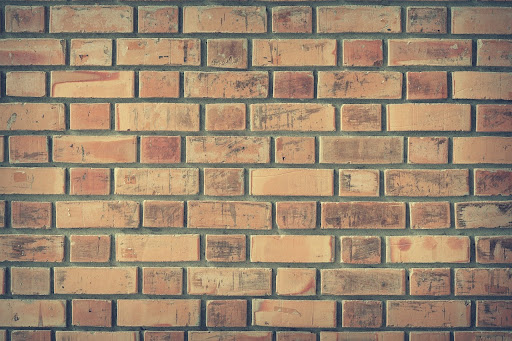
Interior Inspection Solid internal walls tend to feel colder to the touch and are more likely to have condensation problems than cavity walls.
Is It Worth Getting External Wall Insulation?
Most of the time, it’s well worth getting external wall insulation if your home has solid walls. By reducing heat loss through the walls, EWI can lower the amount of energy needed to heat your home, meaning your energy bills could be lower and, over time, these savings can offset the initial cost of installation.
On average, you can expect to save £200-700 each year on your energy bills, but this will depend on how much you currently spend and how big your home is. If you live in a detached house with lots of external walls, you’re likely to save more than someone in a smaller semi-detached property. It’s also worth noting that should the time come when you want to sell your home, it may have an increased market value, as EWI should increase its energy rating.
Solid-walled homes without external wall insulation can also be prone to experiencing condensation and damp issues, but proper insulation can prevent this, as the walls will be kept warmer. Not only will this make your home more liveable, but its overall structure will be protected and less likely to need extensive repairs in the future. Fortunately, EWI doesn’t need much maintenance and will likely last for many years to come, so you shouldn’t need to worry about maintenance or excessive future costs.
What is EWI Made of?
EWI is made up of lots of different layers, all serving a slightly different function but ultimately working to make your walls more effective at keeping heat in. At the heart of this is the insulation layer, which is responsible for thermal resistance. Commonly used materials for this layer include expanded polystyrene (EPS), mineral wool, and phenolic foam. The best external wall insulation materials will depend on the type of building you live in and how much insulation you need, as they all have slightly different properties.
The installation process also uses adhesives and fixings to securely attach the insulation to your home’s exterior, which are then followed by a basecoat with reinforcement mesh, usually fibreglass, to add strength and prevent cracking. A primer is then applied to act as a seal against moisture and make sure the insulation lasts as long as possible.
The outermost layer of the EWI system is the render or topcoat, which gives the walls an attractive appearance. Available in synthetic or mineral-based options, renders come in various textures and colours, allowing for customisation.
How Much Does EWI Cost?
The cost of external wall insulation systems varies and you can expect to pay more the bigger your home is and the more walls you need insulating. Work for smaller properties typically costs around £4,000 while bigger homes can come to over £14,000, but costs may be different depending on the type of walls you have and how difficult it is to insulate them.
Before committing to any work, it’s advisable to get a free quote from a trustworthy EWI installer, as this will give you a better understanding of the costs involved as well as the work that needs to be carried out. Here at Cotswold, we’re Trustmark-approved and offer no-obligation quotes along with surveys to make sure you find the right type of insulation for both your home and your financial situation.
Are There Any Schemes to Make Installation More Affordable?
Yes, the government does have some grants on offer to homeowners looking to upgrade their external insulation. Some of these grants are available through the Energy Company Obligation (ECO) Programme, which is targeted to help those on state benefits. Grant amounts will vary and depend on your household income, so unless you’re a low-income household you may not qualify.
You may also be eligible for the Great British Insulation Scheme (GBIS), which can subsidise the cost of insulation if you live in a home with an EPC rating from D to G, or live in a Council Tax Band from A to D in England, or A-E in Scotland and Wales. The amount of support you can receive will vary, but it’s available to both homeowners and tenants (though you will need a landlord’s permission before carrying out work).
How Long Does It Take to Install External Wall Insulation?
External wall insulation doesn’t take very long and can usually be completed in around seven working days. Smaller properties with fewer walls may take less time, while larger-scale projects could take a few weeks.
Potential Problems with EWI Installation
Most EWI installations go ahead without any issues, but poor weather can sometimes delay work. Delays are more likely to happen in the winter months when there’s more rain, so it’s best to try and schedule work during a drier season if possible. This is because the top coats and renders need time to dry and won’t set properly if they get wet too soon after they’re applied.
Is External or Internal Wall Insulation Better?
Choosing between external and internal wall insulation is ultimately down to your priorities, your home’s needs, and your budget. External insulation is very effective at keeping your home warm without sacrificing any indoor space and it can help its outside to look refreshed. However, it’s typically more expensive and the installation is weather-dependent.
Internal insulation might be better suited to smaller budgets and can be more suitable if you want to keep the exterior of your home unchanged, especially in areas with strict planning regulations. The downside is it’ll reduce your interior space and installation can be more disruptive than it is for external insulation.
Is External Wall Insulation Right for You?
External wall insulation has the potential to make your home more comfortable and boost its energy efficiency while reducing the risk of developing condensation problems and damp. However, it may not be right for everyone and is often better suited to older, solid-walled buildings. To learn more about external wall insulation and whether it’s right for your home or property, get in touch. Our team can help you to better understand your insulation needs and work with you to find a solution that’s suitable for your current situation and budget.

